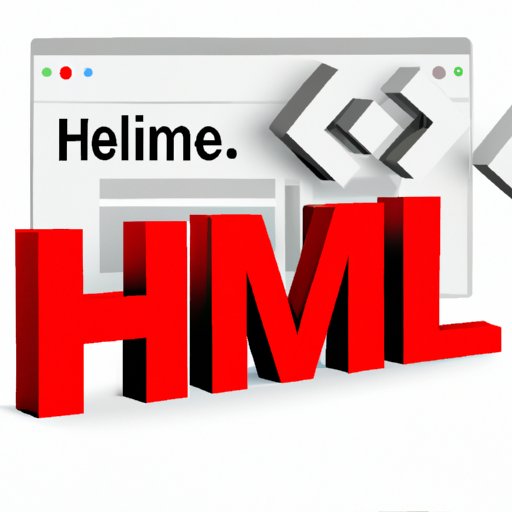How to Add an Image on HTML: A Step-by-Step Guide
Website design is incomplete without images. Adding images to HTML not only enhances the visual appeal of web pages, it also helps in communicating the message of the content more effectively. However, adding images to HTML requires a certain level of expertise. In this article, we will provide step-by-step instructions on how to add an image on HTML.
Step by Step Tutorial
Adding an image to HTML requires three basic steps: uploading the image, creating an image tag, and placing the image tag in the HTML code where you want the image to appear.
Uploading The Image
To add an image to your web page, you first need to upload the image file. You can use your own image or use one from a stock image website. Once you have your image, you need to upload it to your website’s server. You can use an FTP client such as FileZilla or use your website’s file manager to upload the image file.
Creating an image tag
After uploading the image, you need to create an image tag. In HTML, images are represented using the tag.
The basic syntax of an image tag is:
<img src="image-file-path">
Here, the “src” attribute specifies the URL or file path of the image file. The “alt” attribute provides alternative text for the image, which is displayed if the image is not available or if the user is using a screen reader.
Placing the image tag in the HTML code
After creating the image tag, you need to add it to the HTML code for your web page at the location where you want the image to appear.
A typical HTML code for displaying an image looks like this:
“`html
Welcome to My Web Page
This is my web page.

“`
Video Tutorial
For those who prefer a visual guide, we have included a video tutorial that demonstrates how to add an image on HTML. The tutorial covers all the steps mentioned in the previous section.
Best Practices
While adding images to HTML, it is important to follow best practices. Doing so can help improve website loading times and accessibility for users. Here are some best practices to follow:
Use appropriate size and format of the image
Using oversized images can significantly slow down the loading time of your website. Therefore, it is important to use the appropriate size and format of the image. You can use tools such as Photoshop or GIMP to resize the image and optimize it for web use.
Write descriptive alt text
Adding descriptive alt text to images can help visually impaired visitors using screen readers understand the purpose of the image. It is recommended to include important information and keywords in the alt text. Avoid using generic phrases such as “image” or “photo” as these do not convey any useful information to users.
Optimize the image for web use
Optimizing your images for web use can significantly reduce loading times. You can use tools such as TinyPNG or ImageOptim to compress the size of the image and improve loading times without significantly impacting the quality.
Examples
A good example of correct use of images can be found on the BBC website. They use images to provide visual aids for their articles and the images are in appropriate sizes with descriptive alt text that tells a story on its own.
On the other hand, an example of poor use of images is on websites with very large and complex images, such as those on photography websites. These can take a long time to load and can disrupt the page layout.
Using Tools and Software
Using tools and software to add images on HTML can significantly reduce the effort and time required to create and upload images. Here are some tools and software developers can use:
Image Optimization Tools
Tools such as TinyPNG and ImageOptim can help optimize the size of images for web use.
Image Editors
Image editors such as Adobe Photoshop and GIMP can help resize and edit images to meet the requirements of your website.
Stock Image Websites
Websites such as Unsplash and Pexels provide free stock images that you can use on your website.
Common Errors and Their Fixes
When adding images on HTML, you may encounter some common errors. Here are some solutions to fix them:
Broken Image Links
Broken image links occur when the image file is moved from its original location or deleted. To fix this error, you need to update the image source URL or file path in the HTML code to reflect the new location of the image.
Slow Loading Times
Slow loading times can cause frustration for website visitors. To fix this error, resize the image and optimize it for web use using a tool such as TinyPNG or ImageOptim.
Missing Alt Text
Missing alt text can cause accessibility issues for visually impaired users. To fix this error, add descriptive alt text to the tag.
Conclusion
Adding images to HTML is an important aspect of web design. By following the steps and best practices outlined in this article, developers can add images to HTML without errors and improve the user experience of their website. We encourage developers to apply these best practices and use the suggested tools and software to enhance their web design skills.
